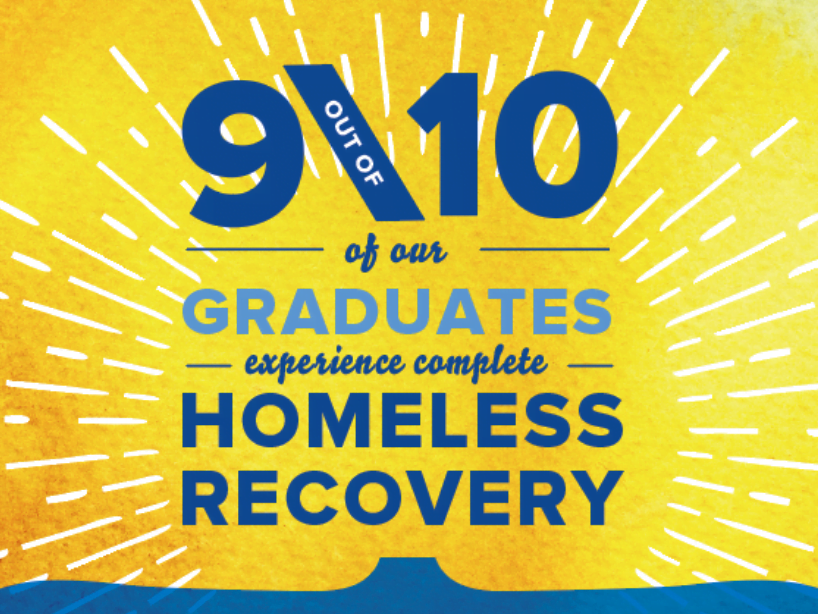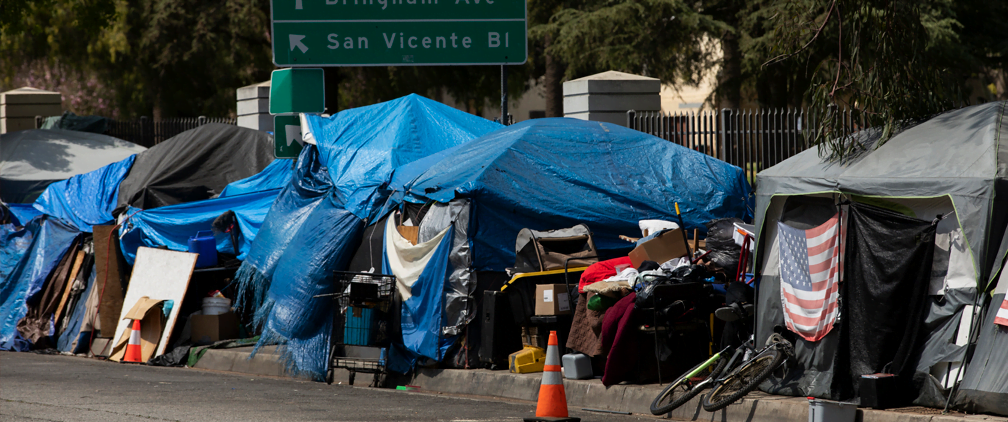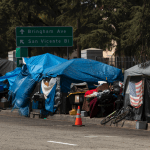Reflecting on the landscape of homelessness in America as we step into 2024 offers both a sobering reality check and a renewed call to action. The challenge is vast, but not insurmountable. With more than half a million individuals finding themselves without a place to call home on any given night, the urgency for comprehensive solutions and compassionate interventions has never been clearer 1.
Homelessness, a stark representation of societal disparities, continues to disproportionately affect certain states and communities, with five states including California, New York, Florida, Washington, and Texas accounting for over half of the nation’s homeless population. This concentration highlights the critical need for targeted efforts in regions most affected by this crisis 2.
In California and New York, the struggle against homelessness is exacerbated by a mix of underlying triggers (such as drugs, alcohol, mental illness, broken relationships, and poverty), high housing costs, limited availability, and significant populations living in major urban centers. These challenges underscore the complexity of homelessness as a multifaceted issue, deeply intertwined with economic, social, and policy factors affecting a broad spectrum of the population, from families to veterans, and disproportionately impacting minority communities 3.
The 2023 statistics serve as a stark reminder of the increasing urgency to address homelessness across the nation. With a 12% increase from the previous year, reaching the highest number of unhoused individuals since record keeping began, the time to act is now. This rise calls for a collective effort to not only provide immediate support but also to tackle the root causes of homelessness, ensuring a sustainable and inclusive approach to recovery and prevention.
As we delve deeper into these statistics and stories, it becomes evident that homelessness is not an insurmountable issue but rather a call to action for each of us. It’s a reminder of the power of community, compassion, and concerted efforts to make a tangible difference in the lives of those who find themselves without a home. By understanding the scale and specifics of this challenge, we can better tailor our actions and contributions towards creating a more inclusive, supportive, and hopeful future for all.
The journey towards addressing homelessness in America is a collective endeavor that requires the involvement and commitment of us all. From policymakers to community organizations, and every individual in between, our unified efforts can pave the way for meaningful change, offering hope and support to those in need. Let us rise to this challenge, inspired by the successes and driven by the urgency of now, to create a society where homelessness is no longer a defining reality for countless individuals and families across our nation.
Homelessness in America: The 2023 Crisis
In 2023, the U.S. saw an escalating homelessness crisis, with 653,100 individuals without a place to call home, reflecting a 12% surge and the highest count ever recorded. In 2024, this urgent issue demands immediate attention and action 4.

Support Homeless No More
Contribute to Homeless No More, boasting a 90% success rate in aiding the homeless transition to meaningful, stable lives. Your support can expand this impactful program nationwide. Learn how you can make a difference today.
Global Homelessness: A Comparative Perspective
As we grapple with homelessness in America, with over 653,100 individuals without shelter in 2023, it’s crucial to broaden our view to the global stage 5. Worldwide, homelessness remains a significant challenge, affecting millions across different continents, cultures, and economic systems. The global homeless population was reported to be around 150 million in 2021, underlining the universality of this issue 6.
Particularly striking is the situation in countries with the largest homeless populations. For instance, India and Nigeria face acute challenges, with homelessness largely driven by poverty, unemployment, and inequality. In India, one of the most populous countries, homelessness is not merely about lacking a physical shelter but also about the lack of access to essential services and adequate living conditions. Nigeria, the most populous country in Africa, has around 4.5 million people without homes, a situation compounded by wealth access issues and rapid urbanization 7.
In contrast, countries like Pakistan report the highest numbers of homeless individuals, with estimates reaching up to 8 million. This comparison highlights the varied nature of homelessness around the globe, reflecting a range of underlying causes from economic disparities to conflict and environmental disasters 8.

Understanding homelessness on a global scale underscores the importance of addressing it not just as a national issue but as a global humanitarian concern. It prompts us to think critically about the role of international cooperation, policy innovation, and community engagement in tackling this pervasive challenge. As we consider the plight of homeless individuals in America, let’s also remember the millions around the world facing similar, if not more dire, circumstances.
Join Homeless No More
Your support can extend beyond borders, offering hope and tangible aid to those in need, both locally and globally. By contributing to Homeless No More, you’re part of a larger movement towards solving homelessness, backed by a program with a proven 90% success rate in changing lives. Learn how your donation can make a difference today.
U.S. Homeless Population by Year
The U.S. has seen fluctuating trends in homelessness over the years. According to the National Low Income Housing Coalition’s 2023 report, approximately 653,100 people were homeless on a single night, a 12% increase from 2022, signaling a rising trend after years of efforts to reduce homelessness 9. This recent increase highlights the complexity of homelessness, influenced by factors like economic instability, housing crises, and systemic inequalities.
Over the past decade, the U.S. has made strides in certain areas, such as reducing veteran homelessness, yet overall numbers have begun to climb again, challenging communities and policymakers to find sustainable solutions. The steady but modest progress witnessed between 2007 and 2016 has been offset by recent increases, underscoring the ongoing need for comprehensive strategies and interventions. 10
Be a Catalyst for Change with Homeless No More
Your support for Homeless No More can directly contribute to reversing this trend. With a 90% success rate in helping individuals permanently off the streets, your involvement can be a key part of the solution. Join us in our mission to provide hope and practical help to those facing homelessness. Together, we can make a significant impact and be part of a positive change across the nation.
Unveiling the Faces of Homelessness: Statistics and Stories from America’s Streets
The demographics of homelessness in the United States reveal a complex tapestry of age, gender, ethnicity, and the reasons behind homelessness. In 2023, a significant increase in homelessness shed light on the diverse populations affected by this crisis.
- Age: The homeless population spans all ages, with an alarming number of both youth and elderly affected. The UCSF study highlights that nearly half of California’s homeless are over 50, indicating a growing concern for older adults without shelter.
- Gender: Homelessness affects all genders, with studies often showing a higher prevalence among men. However, women face unique challenges, including higher rates of victimization and health issues.
- Ethnicity: Ethnic disparities are stark, with Black and Native American populations dramatically overrepresented among the homeless in California and nationwide. Despite making up a smaller portion of the general population, these groups face higher rates of homelessness, underscoring systemic inequalities.
These statistics underscore the urgent need for targeted interventions that address the specific needs of diverse homeless populations. By understanding the demographics of homelessness, we can tailor our efforts to provide effective support and solutions. 11
Empower Change with Homeless No More
Supporting Homeless No More means directly addressing the multifaceted issue of homelessness across all demographics. Your contribution aids in providing tailored support and solutions, making a tangible difference in the lives of many. Join us in this vital work to create a future where everyone has a place to call home.
Is Homelessness Increasing?
Yes, homelessness in America is on the rise. The 2023 Annual Homeless Assessment Report by HUD highlighted an alarming 12% increase in homelessness, totaling approximately 653,100 individuals on a single night, the highest since records began. This uptick underscores the escalating challenge of homelessness across the nation, exacerbated by factors such as economic instability and the housing affordability crisis. 12
Act Now with Homeless No More
Your support can help reverse this growing trend. By contributing to Homeless No More, you join a community dedicated to providing effective solutions and support to those in need. Together, we can make a difference in the fight against homelessness.
Why is Homelessness a Problem
Homelessness is not just a lack of shelter; it’s a complex issue that is caused by one of five underlying triggers (drugs, alcohol, mental illness, broken relationships, and poverty). It strains public health systems, as those without homes are more prone to serious health issues, often requiring emergency care. Economically, it leads to increased public spending on social services, healthcare, and law enforcement. The societal fabric weakens as community ties erode, impacting social cohesion and safety.
Misconceptions abound, painting homelessness as a result of personal failings rather than understanding it as a systemic failure, often exacerbated by economic downturns, a lack of affordable housing, and insufficient mental health services often precluded by the five underlying triggers mentioned above. Addressing homelessness requires more than just providing immediate shelter; it necessitates a comprehensive support system to address the root causes, including access to affordable housing, healthcare, job training, and substance abuse treatment.
The importance of support and intervention cannot be overstated. By investing in preventive measures and support systems, societies can reduce the incidence of homelessness, improve the quality of life for all citizens, and foster stronger, more resilient communities. In tackling homelessness, we not only aid those in immediate need but also build a foundation for long-term societal and economic stability.
Key Questions Answered
In 2023, the United States witnessed an alarming increase in homelessness, with approximately 653,100 people experiencing homelessness on any given night, marking a 12% increase from the previous year and the highest number since records began. This translates to about 0.2% of the U.S. population, highlighting the growing crisis across the nation.
California remains the state with the highest rate of homelessness, accounting for nearly 30% of the entire homeless population in the country. This significant figure is largely due to the state’s high cost of living and housing affordability crisis.
Among U.S. cities, New York City and Los Angeles have the most significant homeless populations, with New York City home to approximately 88,025 and Los Angeles to about 71,320 homeless individuals. These cities, known for their large urban centers, face unique challenges in addressing homelessness, reflecting broader issues of economic inequality and housing scarcity.
Engage and Make a Difference with Homeless No More
The rising homelessness rates underscore the urgent need for support and intervention. By contributing to Homeless No More, you can help provide vital resources and support to those in need, making a direct impact in the fight against homelessness. Join us in our efforts to address this critical issue and help create a brighter future for many.
Conclusion
As we conclude our exploration of homelessness in America, it’s clear this issue touches on deeper societal and economic fabrics, revealing the urgent need for collective action and compassion. Homelessness is more than numbers; it’s about real people facing daily challenges, often without the support they desperately need. It underscores a broader crisis of unaddressed underlying triggers, affordability, access to healthcare, and systemic barriers that require a unified effort to dismantle.
Your Role in the Movement Against Homelessness
Everyone has a role to play in addressing this crisis. Whether through advocacy, volunteering, or education, your actions can contribute to a larger movement aimed at creating systemic change. By understanding the root causes and engaging in community efforts, we can begin to make a tangible difference in the lives of those affected.
Join Us in Making a Difference
Homeless No More has been at the forefront of providing comprehensive solutions to homelessness, achieving a remarkable success rate in transforming lives. Your support can extend our reach, bringing hope and practical assistance to more individuals across the nation and – eventually – the world. By visiting the Homeless No More donation page, your contribution will directly impact lives, helping to expand the program’s reach and effectiveness.
Together, we can work towards a future where homelessness is not a defining aspect of American society and the global society. Your support is crucial in this endeavor. Join us in this vital mission, and let’s make a lasting difference in the lives of many.
Visit Homeless No More to learn how you can contribute to creating a world where everyone has a place to call home. Your support can change lives.
—–
References:
- https://www.hud.gov/press/press_releases_media_advisories/HUD_No_23_278
- https://endhomelessness.org/homelessness-in-america/homelessness-statistics/state-of-homelessness/
- https://www.security.org/resources/homeless-statistics/
- https://nlihc.org/resource/hud-releases-2023-annual-homeless-assessment-report
- https://nlihc.org/sites/default/files/2023-12/Memo_121823.pdf
- https://www.homelessworldcup.org/homelessness-statistics#:~:text=As%20many%20as%201.6%20billion,million%20people%20were%20homeless%20worldwide.
- https://worldpopulationreview.com/country-rankings/homelessness-by-country
- ibid.
- https://nlihc.org/resource/hud-releases-2023-annual-homeless-assessment-report#:~:text=The%20number%20of%20families%20experiencing,of%20families%20experiencing%20sheltered%20homelessness
- https://www.nytimes.com/2022/06/14/headway/medicaid-housing-rent-health.html
- https://endhomelessness.org/demographic-data-project-gender-and-individual-homelessness/
- https://nlihc.org/resource/hud-releases-2023-annual-homeless-assessment-report#:~:text=HUD%20released%20on%20December%2015,70%2C650%20more%20people
0006





